 Pushing the Limits is a virtual shaft weaving artwork exhibition curated by former European Textile Network ETN president -and always a weaver- Lala de Dios (Spain) and textile artist Olivier Masson (France) who has also engineered the exhibition.
Pushing the Limits is a virtual shaft weaving artwork exhibition curated by former European Textile Network ETN president -and always a weaver- Lala de Dios (Spain) and textile artist Olivier Masson (France) who has also engineered the exhibition.
Weaving is one of oldest human industries -if not the oldest- and many kinds of looms or weaving devices have been accompanying humankind since the beginning of times. From the backstrap to dobby looms, the history of weaving has been an uninterrupted succession of technological inventions until the arrival of the first Jacquard hand looms in 18th century France. The rest is history. Today we are living the digital Jacquard loom era. Contemporary textile artists use this tool which allows for an -almost- unlimited freedom to weavers.
This should not hide the fact that many of today’s artists and designers are happily enjoying weaving in shaft looms as weavers have been doing for hundreds of years. Not only to weave the functional textiles so often associated with the machine, but also works of art ; from Anni Albers’ pictorial weavings to Peter Collingwood`s macrogauzes to quote only two well-known examples from the last century.
The exhibition aims to highlight the incredible possibilities of that supposedly limited “machine†to create textile pieces that are works of art in their own right. The call for entries was open to shaft weavers all over the world.The organisers received 89 application coming from 22 countries: from the UEA (24 applications), the UK (19), Netherlands (9), Spain (6), France, Sweden and Lithuania (4 each), Canada, Switzerland, Italy, Australia (2 each) and Germany, Russia, Denmark, Portugal, Brazil, Norway, Ukraine, Venezuela, India, Estonia and Belgium (1 each). From these 53 works were selected.
The call for entries was open to shaft weavers all over the world.The organisers received 89 application coming from 22 countries: from the UEA (24 applications), the UK (19), Netherlands (9), Spain (6), France, Sweden and Lithuania (4 each), Canada, Switzerland, Italy, Australia (2 each) and Germany, Russia, Denmark, Portugal, Brazil, Norway, Ukraine, Venezuela, India, Estonia and Belgium (1 each). From these 53 works were selected.
The exhibition was opened on December 1st, 2020. The closing has not yet been decided but it will not be before December 1st, 2021.
There you may chose Watch or Visit the exhibition. By clicking on each work a new page appears with information about the author.
Link to download the catalogue pdf or order it printed: . To download it just click in See a preview of the catalog (in blue)
As it was to be expected most of the works have been woven on digital dobby looms using a high number of shafts (Jacquard looms were especifically excluded in the exhibition regulations). However there are also very interesting works woven in relative few shafts (even on 3 shafts!). All works share several traits in common: the weavers invested vast amounts of technical skill and know how and a limitless imagination to overcome the limits of the shaft loom. it would seem that these limits have revealed themselves as a most powerful incitement for creation.
Curators
Olivier Masson, France. As a textile artist, he works on color and geometric designs inspired by shaft weaving. He published with François Roussel in 1987 the book : “Shaft weaving and graph design” and created in 1985 the textile software “Pointcarré”.
Lala de Dios, Spain. A historian of art by education and a vocational weaver. She designs and produces shaft weaving textiles, teaches and organizes textile exhibitions, conferences and educational events. She likes to define herself as a textile activist.
List of Images: Names of Artists and works appear when clicking on the image in the gallery
Top image : Shadow of a Doubt. Theo Rooden, Netherlands. Double weave, linen. Handwoven in a 8-shafts countermarch loom.
Eclats (Radiances). Olivier Masson, France. Gift ribbon. Handwoven in an electronic dobby loom with 24 shafts.
Christiane Maurer, Germany / Netherlands. Untitled. Mercerized cotton. Double weave handwoven with 16 shafts in an electronic dobby loom (Megado, Louet).
Sign, Danguole Cachaviciene, Lithuania. Cotton and linen. Double layer weaving. Handwoven in a three shaft loom.
The Red Bookshelf. Josefin Gäfvert, Sweden. Wool partially hand dyed. Double weave in tabby. Handwoven in a countermarch loom with 8 shafts.
Flooded Forest. Kadi Pajupuu, Estonia. Cotton, linen. Handwoven in countermarch loom with 6 shafts. The deformation of warp lines has been achieved with RailReed (adjustable reed invented by the author).
Memory. Lucy Rhodes, UK. Linen, spun silk, organzine, paper. Interchanging double weave. Handwoven in a 8-shaft Louet Jane table loom.
Personal Metals. Luis RenterÃa, Spain. Cotton, linen. Double weave. Handwoven in an Ashford table loom with 16 shafts.
Hidden Layers of Time. Pat Moloney, UK. Cotton, rayon, recycled sari yarn from Nepal. Handwoven in a 16-shaft loom.
Anni Albers. Black White Yellow (detail), 1926/1964. Victoria and Albert Museum
All images courtesy of the artists and Text Lala de Dios.

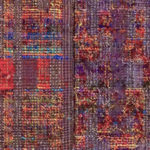
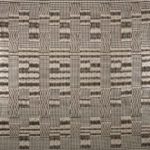
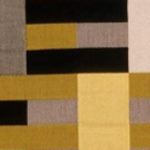
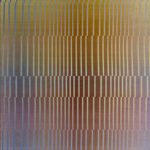
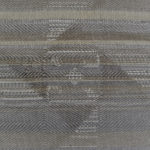
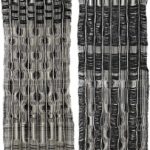
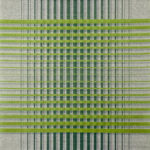
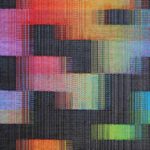
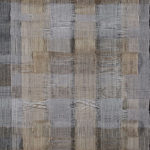
{ Comments are closed! }